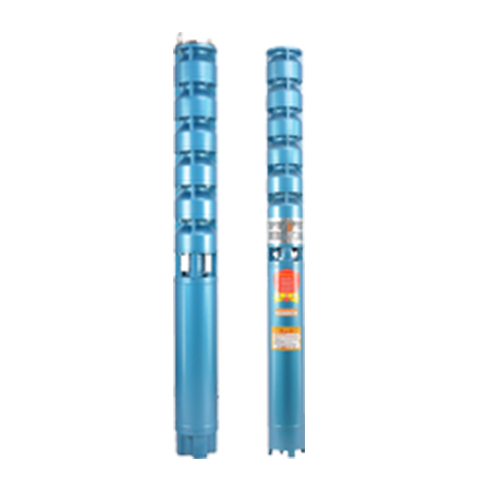Nov . 28, 2024 01:56 Back to list
Sewage Submersible Pumps for Efficient Wastewater Management and Drainage Solutions
Understanding Sewage Submersible Pumps A Key Component in Wastewater Management
Sewage submersible pumps are vital equipment used in the management and treatment of wastewater. These pumps are designed to operate submerged in sewage, making them efficient and effective for various applications. With an increasing focus on environmental sustainability and efficient waste management, understanding the role and functionality of these pumps is essential.
What is a Sewage Submersible Pump?
A sewage submersible pump is a type of centrifugal pump that is fully submerged in the liquid being pumped, usually wastewater. Unlike standard pumps that operate above ground, submersible pumps are engineered to handle the pressures of being underwater. They typically have a sealed motor and a submerged design that prevents the entry of wastewater into the motor, ensuring durability and effective operation.
Applications of Sewage Submersible Pumps
Sewage submersible pumps are primarily used in various wastewater applications, including
1. Sewage Treatment Plants These pumps are integral to the effective operation of municipal sewage treatment facilities. They transport raw sewage to treatment stations, ensuring a continuous flow of wastewater for processing.
2. Residential and Commercial Pumping In homes and businesses, submersible pumps can manage wastewater from bathrooms, kitchens, and other plumbing systems. They are particularly useful in basements or properties that are below the sewer line, where gravity drainage is inadequate.
3. Industrial Uses Many industries generate wastewater that requires effective handling. Submersible pumps are used to manage water from manufacturing processes, chemical production, and food processing, ensuring that waste is safely transported away from production areas.
4. Flood Control During heavy rainfall or flooding, these pumps can be deployed to remove excess water quickly, minimizing damage to properties and reducing contamination risks.
sewage submersible pump

Advantages of Sewage Submersible Pumps
Sewage submersible pumps offer several advantages that make them preferable for wastewater management
- Space Efficiency These pumps do not require a large footprint as they are installed underground, which is beneficial in environments with limited space.
- High Efficiency Submersible pumps are designed to handle large volumes of wastewater and can operate continuously, maintaining high efficiency over time.
- Reduced Noise Pollution Since they are submerged, these pumps operate with significantly less noise, making them a good choice for residential and urban areas.
- Lower Risk of Clogging Many submersible pumps are designed with features that prevent clogging from solids and debris commonly found in sewage, ensuring reliable performance.
Maintenance and Care
While sewage submersible pumps are designed to be robust and durable, regular maintenance is important to ensure long-term performance. Routine tasks include checking the electrical connections, monitoring for leaks, cleaning the impeller, and making sure the floats and sensors are functioning properly. Addressing issues promptly can prevent costly repairs and extend the lifespan of the pump.
Conclusion
Sewage submersible pumps play a fundamental role in modern wastewater management. Their ability to efficiently transport sewage while minimizing space and noise makes them invaluable in both residential and industrial applications. As urban areas continue to grow and face challenges related to wastewater management, the importance of reliable sewage submersible pumps cannot be overstated. Understanding their functionality, applications, and maintenance is crucial for anyone involved in waste management or looking to implement effective solutions for sewage disposal. With the right knowledge and equipment, we can ensure cleaner, safer environments for our communities.
-
Submersible Water Pump: The Efficient 'Power Pioneer' of the Underwater World
NewsJul.01,2025
-
Submersible Pond Pump: The Hidden Guardian of Water Landscape Ecology
NewsJul.01,2025
-
Stainless Well Pump: A Reliable and Durable Pumping Main Force
NewsJul.01,2025
-
Stainless Steel Submersible Pump: An Efficient and Versatile Tool for Underwater Operations
NewsJul.01,2025
-
Deep Well Submersible Pump: An Efficient 'Sucker' of Groundwater Sources
NewsJul.01,2025
-
Deep Water Well Pump: An Efficient 'Sucker' of Groundwater Sources
NewsJul.01,2025
-
 Submersible Water Pump: The Efficient 'Power Pioneer' of the Underwater WorldIn the field of hydraulic equipment, the Submersible Water Pump has become the core equipment for underwater operations and water resource transportation due to its unique design and excellent performance.Detail
Submersible Water Pump: The Efficient 'Power Pioneer' of the Underwater WorldIn the field of hydraulic equipment, the Submersible Water Pump has become the core equipment for underwater operations and water resource transportation due to its unique design and excellent performance.Detail -
 Submersible Pond Pump: The Hidden Guardian of Water Landscape EcologyIn courtyard landscapes, ecological ponds, and even small-scale water conservancy projects, there is a silent yet indispensable equipment - the Submersible Pond Pump.Detail
Submersible Pond Pump: The Hidden Guardian of Water Landscape EcologyIn courtyard landscapes, ecological ponds, and even small-scale water conservancy projects, there is a silent yet indispensable equipment - the Submersible Pond Pump.Detail -
 Stainless Well Pump: A Reliable and Durable Pumping Main ForceIn the field of water resource transportation, Stainless Well Pump has become the core equipment for various pumping scenarios with its excellent performance and reliable quality.Detail
Stainless Well Pump: A Reliable and Durable Pumping Main ForceIn the field of water resource transportation, Stainless Well Pump has become the core equipment for various pumping scenarios with its excellent performance and reliable quality.Detail
